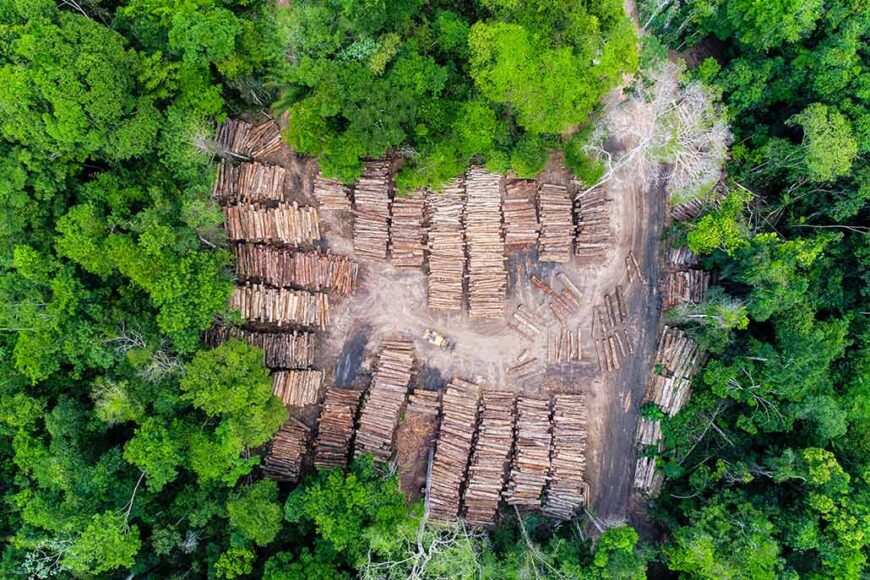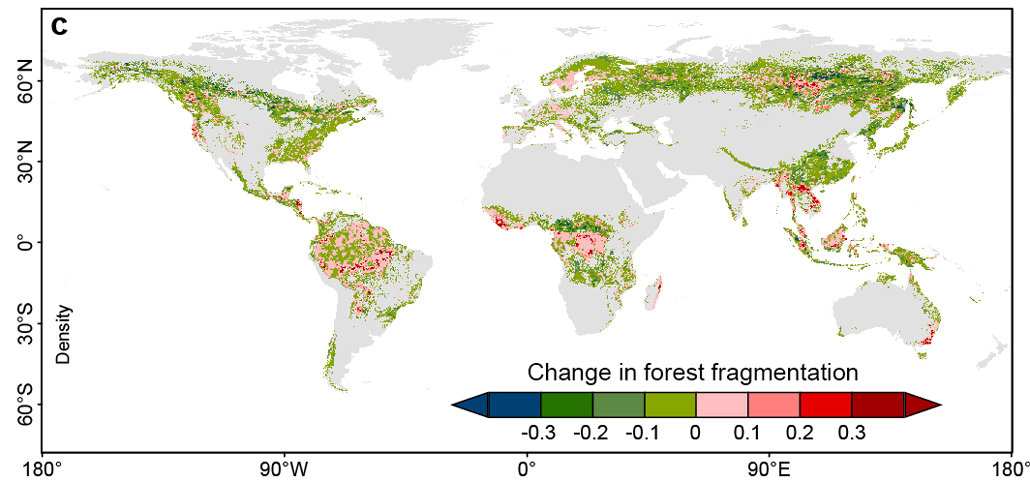Analyze This: Tropical forests have gotten patchier
Breaking up a forest can put the ecosystem’s animal inhabitants at risk

When forest ecosystems are broken up by human activities such as logging, their function suffers. This fragmentation has been the most severe in tropical forests.
Tarcisio Schnaider/iStock/Getty Images Plus
Fires, roads and logging all slice through swaths of forest, chopping them into fragments. Such forest fragmentation can harm the ability of these ecosystems to sustain their animal inhabitants. Now, a study reveals that the world’s tropical forests may face the greatest risk of this damage.
Even if a forest’s total area doesn’t change much, breaking it up can drastically reduce its function, says Jun Ma. An ecologist, Ma works at Fudan University in Shanghai, China. Think of what happens when a glass cup breaks, he says. The same amount of glass remains, but the cup no longer holds water. Forest fragmentation is similar. Some forest-dwelling creatures require a lot of space. For example, a panda needs around 4 to 6 square kilometers (1.5 to 2.3 square miles) to support its normal life in the wild. A lot of small patches of forest that add up to that area won’t do.
Ma and his colleagues analyzed maps of forest cover around the world from 2000 and 2020. They created a forest fragmentation index — a number that captures forests’ patchiness. The researchers calculated this value for segments of forest that were 25 square kilometers (6,178 acres).
The index for each area was based on the size of forested spots, how closely such areas were packed together and the length of the forests’ edges. Carving up a large area of forest cuts it into more pieces. The average area of each piece shrinks while the average length of the edges grows, Ma explains. The team compared each area’s index from 2020 with the one from 2000.
About 75 percent of Earth’s forests decreased in fragmentation between 2000 and 2020, the team found. That’s good news. But tropical forests — those found near Earth’s equator — became more fragmented. That’s worrisome because the tropics harbor much of Earth’s plant and animal diversity, Ma says. The researchers shared their findings July 11 in Nature Communications.
Reducing the amount of logging in the tropics would help some of these forests, Ma says. People can also plant trees in previously unforested areas. But, he says, adding new forests should make forested areas bigger, not create more small patches.
Fragmented Forests
Researchers calculated a value they call the forest fragmentation index for forested areas around the world. That index measures how chopped up a forested area is. The team then calculated how this value changed in different forested areas from 2000 to 2020. A positive change in the index means that forest fragmentation increased over that period of time. A negative change in the value means that forest fragmentation decreased.

Data Dive:
- Look at the bar with different colors. What kind of change in forest fragmentation do pink and red indicate? What do blue and green indicate?
- Now look at the map. Which parts of Earth have a lot of forest cover?
- What are some places where forests have become more fragmented in the past 20 years?
- Where has the change in forest fragmentation been greatest?
- What are some places where forests have become less fragmented?
- Can you think of some forest animals that might need a lot of space to survive? Why would they need this space?







